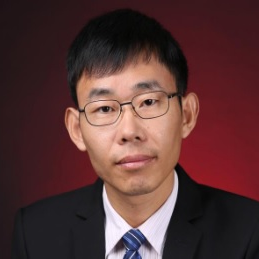Topic Editors

Materials, Structure Designs and Device Fabrications for Highly Efficient/Long Lifetime Organic Light-Emitting Diodes
Topic Information
Dear Colleagues,
Organic light-emitting diodes (OLEDs) constitute an excellent technology and have already been commercialized in full-color display panels due to their high efficiency and low manufacturing costs. Over the past two decades, tremendous efforts have been spent to improve the performance of OLEDs by measures such as developing efficient phosphorescent materials and TADF materials, or exploiting various device configurations to efficiently utilize excitons. Though the efficiency and lifetime of OLEDs have been made great progress, OLEDs still have a lot of issues to be solved before they can be widely used as lighting devices.
We expect that high-performance OLEDs which are highly efficient and/or highly reliable will be deveoped through the further exploration of the design of novel organic materials, new device structures and the underlying emission mechanisms. This Topic aims to cover recent developments in OLEDs. Contributions to this Topic can include full research articles, short communications, and reviews focusing on recent advancements in OLEDs.
Prof. Dr. Ping Chen
Prof. Dr. Jwo-Huei Jou
Topic Editors
Keywords
- OLED
- phosphorescent materials
- TADF materials
- fluorescent materials
- device structure
Participating Journals
| Journal Name | Impact Factor | CiteScore | Launched Year | First Decision (median) | APC | |
|---|---|---|---|---|---|---|

Chemistry
|
2.1 | 2.5 | 2019 | 19.1 Days | CHF 1800 | Submit |

Materials
|
3.4 | 5.2 | 2008 | 13.9 Days | CHF 2600 | Submit |

Micromachines
|
3.4 | 4.7 | 2010 | 16.1 Days | CHF 2600 | Submit |

Molecules
|
4.6 | 6.7 | 1996 | 14.6 Days | CHF 2700 | Submit |

Photonics
|
2.4 | 2.3 | 2014 | 15.5 Days | CHF 2400 | Submit |

MDPI Topics is cooperating with Preprints.org and has built a direct connection between MDPI journals and Preprints.org. Authors are encouraged to enjoy the benefits by posting a preprint at Preprints.org prior to publication:
- Immediately share your ideas ahead of publication and establish your research priority;
- Protect your idea from being stolen with this time-stamped preprint article;
- Enhance the exposure and impact of your research;
- Receive feedback from your peers in advance;
- Have it indexed in Web of Science (Preprint Citation Index), Google Scholar, Crossref, SHARE, PrePubMed, Scilit and Europe PMC.


